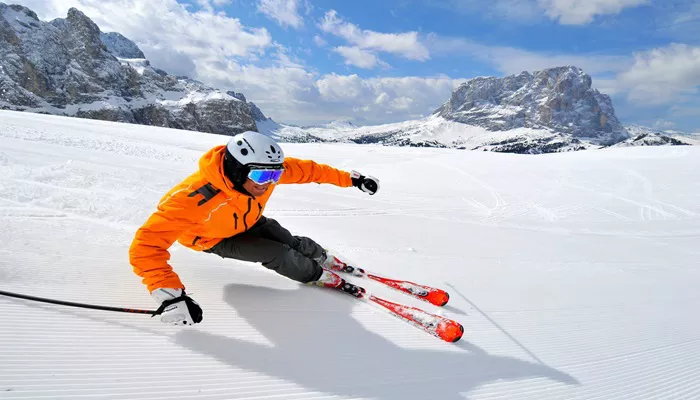Buck Hill is one of Minnesota’s most well-known ski areas, famous for its accessible location, excellent training programs, and rich history of producing top-tier skiing talent. Located in Burnsville, Minnesota, this ski hill has been a beloved winter destination for skiers and snowboarders alike, offering a variety of runs for all skill levels.
One of the most frequently asked questions among skiing enthusiasts is, “When does Buck Hill open for skiing?” The answer to this depends on a variety of factors, including weather conditions, snow production, and operational preparations. In this article, we will explore the typical ski season at Buck Hill, the role of artificial snowmaking, and what visitors can expect during the opening period.
Typical Ski Season at Buck Hill
Buck Hill typically opens for skiing in mid to late November, depending on weather conditions and snow availability. The season usually extends through March or early April, giving winter sports enthusiasts several months of skiing and snowboarding opportunities.
Factors Affecting the Opening Date
Several factors influence when Buck Hill officially opens for skiing each year:
Temperature Conditions – Cold temperatures (ideally below 32°F or 0°C) are necessary for natural snowfall and artificial snowmaking.
Snow Accumulation – Sufficient snowfall or artificial snow coverage is required to ensure safe and enjoyable skiing conditions.
Snowmaking Operations – Buck Hill has a robust snowmaking system that allows them to open early in the season, even if natural snowfall is limited.
Operational Readiness – Preparing the slopes, ensuring safety measures are in place, and staffing ski patrol and other essential personnel are crucial before the hill opens to the public.
Snowmaking: Extending the Ski Season
One of Buck Hill’s key advantages is its state-of-the-art snowmaking capabilities, which allow it to open earlier than many other ski areas in the region. This artificial snow ensures that skiers can hit the slopes even if natural snowfall is insufficient.
How Snowmaking Works
Snowmaking involves:
Water and Air Compression: Water is pumped through high-pressure nozzles and mixed with compressed air to create fine droplets.
Cold Weather Activation: The droplets freeze as they fall to the ground, forming artificial snow that mimics natural snowfall.
Grooming the Slopes: Once the snow has been produced, grooming machines distribute it evenly to create smooth, skiable terrain.
Thanks to this technology, Buck Hill can maintain consistent skiing conditions throughout the season, even during warmer or drier periods.
What to Expect on Opening Day
Opening day at Buck Hill is an exciting event, drawing eager skiers and snowboarders from across Minnesota and beyond.
Here’s what visitors can typically expect:
1. Limited Trail Availability
Not all runs may be open on the first day. The resort prioritizes key trails for early-season skiing while continuing snow production to prepare additional terrain.
2. Early-Season Events and Promotions
Buck Hill often celebrates opening day with special events, discounted lift tickets, and early-season promotions to attract visitors.
3. Safety and Equipment Checks
Since it’s the beginning of the season, skiers are encouraged to:
Check their equipment for proper fit and functionality.
Warm up and start with easier runs to regain their skiing technique.
Follow all safety guidelines set by the ski resort.
4. Ski Lessons and Programs
Buck Hill is renowned for its ski school, which has trained Olympic-level athletes such as Lindsey Vonn. On opening day, ski instructors are available for lessons catering to beginners and advanced skiers looking to refine their technique.
How to Stay Updated on Opening Dates
For the most accurate and up-to-date information on when Buck Hill will open for skiing, consider the following sources:
1. Official Website
Buck Hill’s website provides real-time updates on snow conditions, opening dates, and available runs.
2. Social Media Channels
Follow Buck Hill on platforms like Facebook, Instagram, and Twitter for the latest announcements and behind-the-scenes snowmaking progress.
3. Local Weather Reports
Checking Minnesota weather forecasts can help predict when temperatures will be cold enough for skiing to begin.
4. Email Newsletters
Subscribing to Buck Hill’s newsletter ensures you receive direct updates about the ski season, special events, and exclusive discounts.
Best Time to Visit Buck Hill
While opening day is exciting, some skiers prefer to wait until more trails are open and conditions are more stable. Here are some tips on the best times to visit Buck Hill:
Early Season (November – December)
Pros: Smaller crowds, early-season discounts, and fresh artificial snow.
Cons: Limited trails and variable weather conditions.
Peak Season (January – February)
Pros: Best snow conditions, full trail availability, and prime skiing experiences.
Cons: Larger crowds, especially on weekends and holidays.
Late Season (March – Early April)
Pros: Warmer temperatures, end-of-season discounts, and potential spring skiing events.
Cons: Snow conditions may deteriorate due to melting.
Conclusion
Buck Hill is a premier ski destination in Minnesota, and its ability to open early in the season makes it a favorite among local skiers. While the exact opening date varies each year, Buck Hill’s advanced snowmaking system ensures that skiing and snowboarding can begin as early as mid to late November.
For those eager to hit the slopes, keeping an eye on weather conditions, official announcements, and snow reports will help determine the best time to visit. Whether you’re a beginner looking to take lessons or an experienced skier ready to tackle the slopes, Buck Hill offers an exciting and accessible winter sports experience for all.

